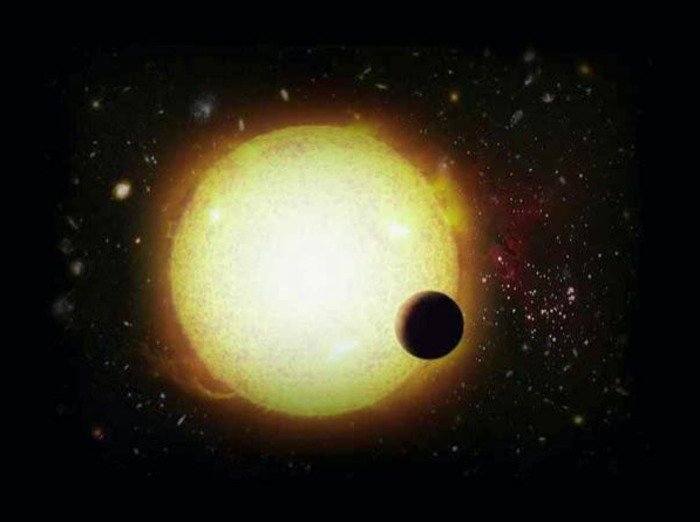Artist's impression of a "hot Jupiter" orbiting close to its sun. Credit: NASA
GREENBELT, Md., May 6 (UPI) -- NASA says its Spitzer Space Telescope is allowing astronomers to study the atmosphere of "hot Jupiter" planets orbiting in the blistering heat of distant stars.
The hot Jupiters, also known as roasters, were the first "species" found among the more than 800 so-called exoplanets known to circle stars beyond our sun.
Now thanks to Spitzer researchers are beginning to analyze this exotic class of planets, revealing raging winds and other aspects of their turbulent nature, including a wide range of climates from hazy to clear, the space agency said Monday.
Their temperature profiles, chemistries and densities differ as well, researchers said.
"The hot Jupiters are beasts to handle. They are not fitting neatly into our models and are more diverse than we thought," said Nikole Lewis of the Massachusetts Institute of Technology, lead author of a paper in the Astrophysical Journal.
"We are just starting to put together the puzzle pieces of what's happening with these planets, and we still don't know what the final picture will be."
Spitzer allows astronomers to create global climate maps of hot Jupiters, revealing how the planets' atmospheres vary from their hot, sun-facing sides to their cooler, night sides, NASA said.
"When Spitzer launched in 2003, we had no idea it would prove to be a giant in the field of exoplanet science," said Michael Werner, the Spitzer project scientist at NASA's Jet Propulsion Laboratory in Pasadena, Calif. "Now, we're moving farther into the field of comparative planetary science, where we can look at these objects as a class, and not just as individuals."















